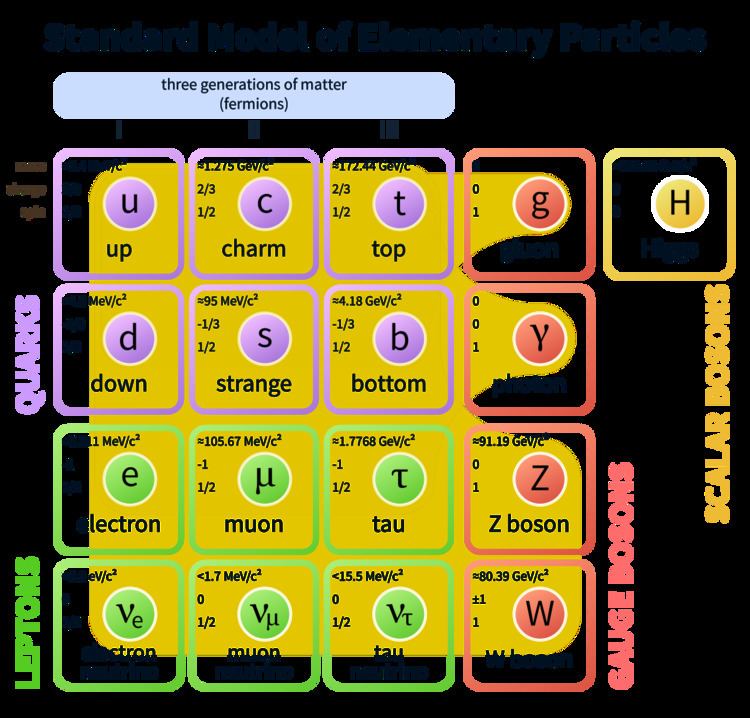 | ||
The charged current interaction is one of the ways in which subatomic particles can interact by means of the weak force. It is mediated by the
W+
and
W−
bosons.
The interaction is often incorrectly believed to be called 'charged' because the W bosons have electric charge. However, the charged current that gives the interaction its name is that of the interacting particles. For example, the charged-current contribution to the
ν
e
e−
→
ν
e
e−
elastic scattering amplitude
where the charged currents describing the flow of one fermion into the other are given by
In simple terms
Charged current interaction is the most easily detected of the interactions of the weak force. The weak force is best known for mediating nuclear decay. It has very short range but is the only force (apart from gravity) to interact with electrons, neutrinos and quarks. The weak force is communicated via the W and Z exchange particles. Of these, the W boson has either a positive or negative electric charge, and mediates neutrino absorption and emission. During these processes, the W boson induces electron or positron emission or absorption, while changing the flavour of a quark. By contrast the Z particle is electrically neutral, and exchange of a Z boson leaves the interacting particles unaffected, except for a transfer of momentum, spin and energy. Because exchange of W bosons involves a transfer of electric charge (as well as a transfer of weak interaction charge), it is known a “charged current”. By contrast, because exchange of Z bosons involves no transfer of electrical charge it is referred to as a “neutral current”. In the latter case, the word “current” has nothing to do with electricity - it simply refers to the exchange of the Z boson.
